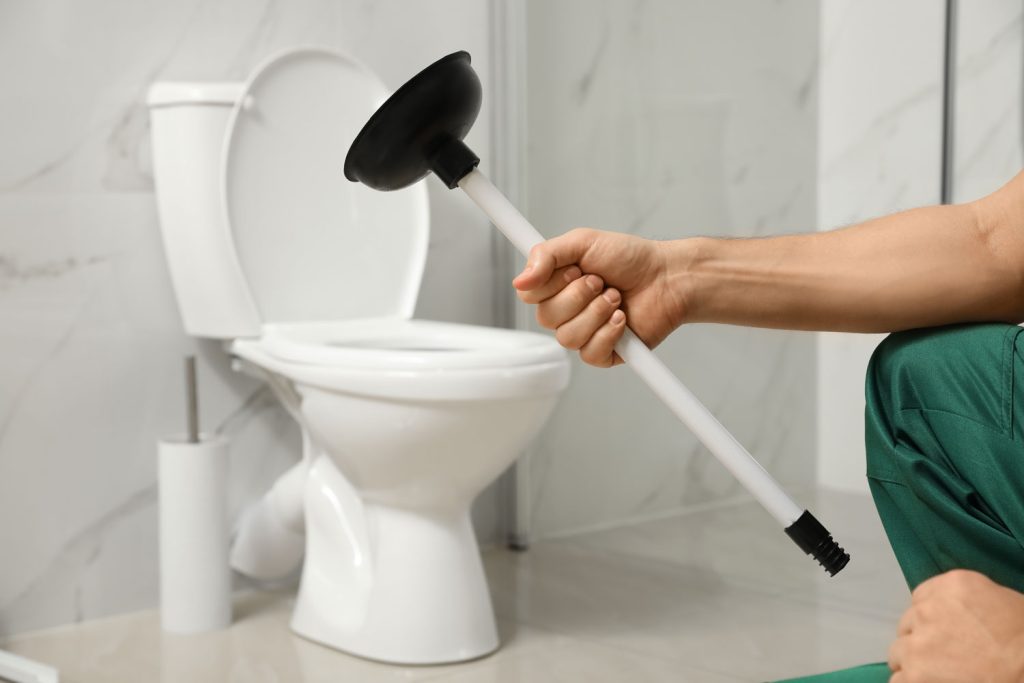Breaking Down the Problem: Understanding Toilet Blockages
Toilet blockages are a common yet preventable plumbing issue that can occur due to several factors. By identifying the root cause of the problem, you can choose the most effective solution and avoid recurring blockages.
Common Causes of Toilet Blockages
-
Excessive Toilet Paper: One of the most frequent causes of clogs is using too much toilet paper, which can create a dense mass that blocks the pipe.
-
Non-Flushable Items: Items like wipes, feminine hygiene products, or even small objects accidentally flushed can obstruct the plumbing system.
-
Hard Water Build-up: In homes with hard water, mineral deposits can accumulate over time, narrowing the pipes and making them prone to blockages.
-
Structural Plumbing Issues: Poorly designed or old plumbing systems may have narrow pipes, sharp bends, or other structural issues that encourage clogs.
Types of Blockages
-
Partial Blockages: The water drains slowly but doesn’t overflow. These are usually easier to resolve.
-
Complete Blockages: Water does not drain at all, often resulting in overflow. These require immediate attention.
-
Recurring Blockages: These indicate an underlying issue, such as damaged pipes or a misaligned plumbing system.
Table: Common Causes and Frequency of Toilet Blockages
|
Cause
|
Frequency (%)
|
Level of Difficulty to Fix
|
|
Excessive Toilet Paper
|
40%
|
Low
|
|
Non-Flushable Items
|
35%
|
Medium
|
|
Hard Water Build-up
|
15%
|
Medium
|
|
Structural Issues
|
10%
|
High
|
DIY Solutions for Unclogging Toilets
Before calling a plumber, there are several DIY methods you can try. These are often cost-effective and can resolve minor to moderate blockages.
Basic Tools for Home Use
-
Plunger: A classic tool available in most households. For optimal use, ensure a tight seal around the drain and apply consistent pressure.
-
Toilet Auger (Plumbing Snake): Perfect for reaching deeper into the plumbing system to dislodge stubborn blockages.
-
Homemade Cleaning Solution: A mixture of baking soda and vinegar can help dissolve organic matter causing minor clogs.
Step-by-Step Instructions
How to Use a Plunger Effectively
-
Ensure the plunger is submerged in water for better suction.
-
Position the plunger over the drain and press down firmly.
-
Use consistent, forceful plunges for about 20 seconds.
-
Check if the water drains properly; repeat as necessary.
Using a Toilet Auger
-
Insert the auger carefully into the toilet bowl.
-
Rotate the handle to navigate the cable through the pipe.
-
Continue until resistance decreases, indicating the blockage has been cleared.
When to Call a Professional
Sometimes, DIY methods aren’t enough to resolve stubborn blockages. Knowing when to contact a professional plumber can save you time, stress, and potential damage to your plumbing system.
Signs You Need a Plumber
-
Recurring Blockages: If your toilet frequently clogs, there may be a deeper issue.
-
Overflowing Water: Persistent overflowing can indicate a severe blockage or structural damage.
-
Foul Odors: Unpleasant smells may mean waste is trapped in the pipes.
What to Expect from Professional Services
-
Drain Augers and Hydro-Jetting: Plumbers use specialized tools like motorized augers or high-pressure water jets to clear stubborn clogs and clean the pipes.
-
Pipe Inspections: Advanced plumbers use video inspection tools to locate and diagnose the problem accurately.
Competitive Services in the Market
|
Service Provider
|
Expertise Level
|
Average Cost($)
|
Response Time
|
|
Local Plumbers
|
High
|
75-150
|
Same Day
|
|
National Plumbing Chains
|
High
|
100-200
|
1–2 Days
|
|
On-Demand Plumber Apps
|
Medium
|
50-100
|
Immediate
|
Preventative Measures
Taking preventive steps can help you avoid future blockages and save money on maintenance.
Dos and Don’ts
Dos
-
Use only flushable toilet paper in minimal quantities.
-
Install a drain screen to catch foreign objects.
-
Regularly clean the toilet with eco-friendly solutions to prevent build-up.
Don’ts
-
Avoid flushing non-biodegradable items such as wipes or sanitary products.
-
Don’t use excessive amounts of chemical drain cleaners, as they can damage pipes.
Regular Maintenance
Emerging Technology: Smart Solutions for Plumbing
Smart technology is revolutionizing how we address household plumbing issues.
Smart Toilets
Modern smart toilets come with features like:
Mobile Apps for Plumbing Services
Apps can help you locate a plumber nearby, schedule maintenance, and even provide step-by-step solutions for minor issues.
FAQs
1. What should I do if my toilet overflows?
Turn off the water supply immediately and use a plunger or call a plumber if the issue persists.
2. Can I use chemical cleaners to unclog my toilet?
While effective for minor clogs, excessive use of chemical cleaners can corrode pipes. Opt for eco-friendly alternatives.
3. How long does it take for a professional plumber to clear a blockage?
Most blockages can be resolved within 30 minutes to an hour, depending on the severity.
4. Are smart toilets worth the investment?
Yes, smart toilets offer long-term benefits like water efficiency, clog prevention, and convenience.
5. What’s the average cost of hiring a plumber?
The cost ranges from $75 to $200, depending on the complexity of the job and the service provider.
References
-
-
-
-

